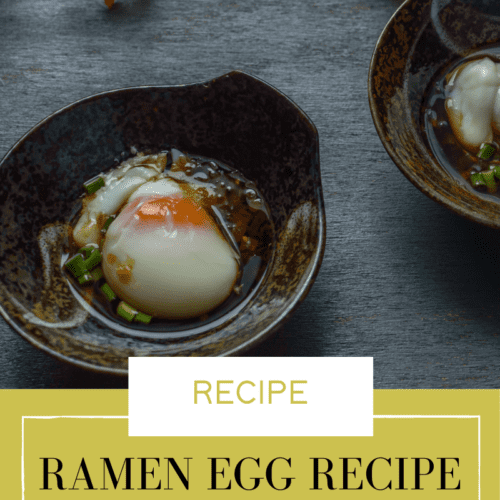
Onsen Egg Recipe (sous vide and no sous vide options)
The perfect onsen egg cooked to your liking, with or without a sous vide. Optional dashi broth recipe included.
Equipment
- 1 Sous Vide Cooker optional
- 1 Cooking Pot --or-- Sous Vide Container
- 1 Large Bowl for an ice bath
Ingredients
For Egg
- 4 large eggs straight out of fridge
For Broth (optional)
- 2 tbsp mirin
- ½ tbsp sugar
- ¼ cup soy sauce
- ¾ cup dashi (for cold broth) or 2 cups for hot broth
- Thinly sliced scallion garnish
Instructions
Four Options for Cooking Egg
- High precision sous vide method:Preheat water to 145°F (63°C). Gently drop in eggs (shell-on) and cook for 45 minutes for a runny yolk or up to 90 minutes for a custardy yolk. Chill eggs in an ice bath for ~15 minutes.
- Quick sous vide method:Preheat water to 167°F (75°C). Gently drop in eggs (shell-on) and cook for precisely 13 minutes. Chill eggs in an ice bath for ~15 minutes.
- Pot with thermometer method:Preheat water to 167°F (75°C). Gently drop in eggs (shell-on) and cook for precisely 13 minutes. Monitor water temp during the cook and add kettled boiling water if needed to keep the temperature as close to 167°F (75°C) as reasonably possible. Chill eggs in an ice bath for ~15 minutes.
- Pot without thermometer method:Bring 4 cups of water to a boil in a pot. Remove from heat and add 2/3 cup lukewarm water. Carefully drop in 4 eggs and cover. Remove eggs after 18-20 minutes depending on whether you prefer the yolk runny or more custard like. Chill eggs in an ice bath for ~15 minutes.
For Dashi Broth (optional)
- While eggs are cooking, simmer mirin in a small saucepan and add sugar stirring to dissolve. Stir in soy sauce and bring to a simmer.Pour into a container to place in the refrigerator to cool.
- When ready to serve, for a cold broth combine 1 part mirin-soy sauce mixture to 3 parts dashi. Unused mirin-soy mixture can be refrigerated for up to six weeks.
Cracking Eggs & Serving
- Under a gentle stream of cold water, carefully crack egg starting at the bottom/flatter end of the egg. Slide egg out of the shell and into a small serving bowl when enough shell is removed. Pour broth over egg, garnish with scallions, and enjoy!
Notes
Onsen tamago can be served in a broth (recipe provided) and also pairs wonderfully with noodle soups and don buri style rice dishes. The egg itself is generally served at room temperature.
For the broth, the ratio of dashi, mirin and soy sauce can be altered to your preference. For a hot broth, which can serve as a noodle soup base, combine 1 part mirin-soy sauce mixture to 8 parts dashi. Using instant dashi is perfectly fine.